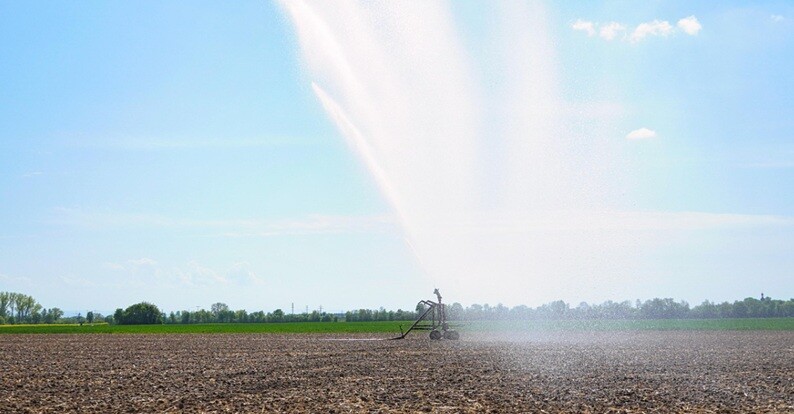If you’ve ever had to unclog a kitchen sink or clean the dust out of a cooler, you know that even the best systems don’t stay clean forever. Irrigation isn’t any different. As water flows through, it carries with it sand, silt, clay, or even bits of leaves and algae. If you don’t take care of it, all that dirt and grit ends up blocking the emitters, putting extra strain on the pump, and slowing down the whole system. A filter for irrigation isn’t just a nice extra, it’s the thing that keeps the whole system running clean.
Why Filters Matter So Much?
The whole point of drip and micro-irrigation is precision and getting just the right amount of water to each plant, at the right time. That precision falls apart if emitters are blocked or pipes are wearing down from sand or debris. A good filter for irrigation acts like the gatekeeper, catching the unwanted stuff and letting only clean water pass through.
But here’s the catch: filters themselves collect everything they stop. Over time, if they’re not cleaned or maintained, they become the problem instead of the solution. That’s why it helps to give filters a bit of attention now and then before they cause trouble.
Types of Filters and What They Need
Not every farm uses the same kind of water. A pond, a canal, or a borewell all bring in their own mix of sand, silt, or organic matter. And because of that, the type of filter, and the way you look after it, changes too. Surface water from rivers or ponds, for example, brings in a lot of organic matter- decaying leaves, algae, and silt. Groundwater, on the other hand, may carry sand or minerals. The filter you choose needs to match the kind of impurities your system faces. Let’s look at some common types and how to keep them in shape.
Hydrocyclone Filters
They’re basically there to catch the heavier bits in the water like sand, grit, and all the stuff you don’t want slipping through. The water goes in at an angle, spins around inside, and the heavier particles get pushed outwards, settling down in a chamber at the bottom.
How to look after them:
- Flush out the sand through the drain port regularly.
- Open the chamber once in a while and clean it when you see it filling up.
- Keep an eye on the plastic inserts at the bottom of the cone- these take the brunt of the sand vortex and may need replacement after long use.
- Always check connections for leaks, since improper sealing can affect pressure and efficiency.
- Hydrocyclones are fairly low-maintenance, but “low-maintenance” doesn’t mean “no-maintenance.” A few minutes spent flushing them regularly saves hours of frustration later.
Hydrocyclone with Auto Flush Kit
For farmers who can’t spare time to keep checking filters, an auto flush kit can be a lifesaver. It handles cleaning automatically at set intervals.
Maintenance tips:
- Make sure the controller is kept dry and protected from dust and rain.
- Keep an eye on the wiring when you fit it in. If it’s loose or the voltage isn’t right, you’ll end up with problems down the line.
- Even though it’s automatic, do a manual check once in a while to confirm the system is flushing properly.
- The beauty of these systems is how they reduce the need for constant human effort, but like any automated tool, they still need periodic supervision to stay reliable.
Sand Media Filters
Sand media filters are often used when the water source is a pond, canal, or river. They’re built to trap organic matter and fine particles. A bed of sand inside the tank acts like a natural sieve.
Maintenance tips:
- Backflush properly and regularly. Insufficient backflushing is the most common reason these filters fail.
- Check the height of the sand bed and refill if it drops below the recommended level.
- Use the right grade of media; the wrong type won’t trap impurities effectively.
- If you notice high pressure differences even after backflushing, scrape off the top layer of sand and clean the tank before refilling.
- Sand media filters are reliable, but they’re also sensitive to neglect. A quick inspection routine saves you from frequent clogs.
General Practices That Apply to All Filters
No matter which filter for irrigation you use, a few golden rules apply:
- Routine checks matter. Don’t wait for the system to slow down. Make it a habit to inspect filters every week or two.
- Flush before you fertilize. Fertilizers and acids can add to clogging problems if filters are already loaded with debris.
- Watch the pressure gauge. A sudden increase in differential pressure often means the filter is blocked.
- The water changes with the season. After rains, it usually brings in more muck. That’s when you’ll want to check and clean the filters more regularly.
- Replace worn-out parts. A cracked cover, damaged seal, or worn insert is cheap to replace compared to the cost of downtime.
Valves and Filters: A Connected Story
A filter can’t do its job alone. It works along with the pipes, pumps, and valves in the system. Say the pressure starts acting up, this is where a hydraulic flow control valve steps in to keep things steady. When you think about it, looking after filters isn’t a separate chore. It’s really about making sure the whole system moves in rhythm.
Farmers’ Experience Speaks Loudest
Over the years, farmers have learned the hard way that skipping filter maintenance almost always shows up in crop performance. Blocked emitters results in uneven watering as some plants get stressed from lack of water while others get flooded. When the filters clog, the pumps works harder and small issues can turn into expensive fixes.
Those who take the time to keep filters clean notice the opposite effect. Their systems run longer without major breakdowns, water savings are real, and yields are more predictable. It’s not glamorous work, but it pays off every single season.
Automat’s Approach
Automat has been around long enough to know the kind of challenges farmers face every day. That’s why their filters are built to be sturdy, easy to clean, and practical to use. The idea isn’t complicated: if maintenance is simple, farmers save time, water, and effort, and the system keeps running season after season without trouble.
Wrapping It Up
Filters aren’t usually the first thing people think about when they set up an irrigation system, but without them nothing really works the way it should. A clean, well-kept filter for irrigation keeps pumps safe, emitters unclogged, and water flowing evenly to the crops.
Luckily, looking after a filter isn’t a big job. Give it a good flush now and then, check if anything looks worn out, backwash when it starts to clog, and keep an eye on the pressure gauge. These small habits save you from bigger headaches down the line.
Automat often points out that irrigation is all about using water wisely. Taking care of your filters is one of the simplest ways to make sure every drop counts.
You may also like to read,
- How Farmers Are Using Technology To Improve Yields and Efficiency
- Dairy Management Software: Trends to Follow







